- Home
- About Us
- TSPT Academy
- Online Courses
-
Resources
- Newsletter
- Business Minded Sports Physio Podcast
- Day in the Life of a Sports PT
- Residency Corner
-
Special Tests
>
-
Cervical Spine
>
- Alar Ligament Test
- Bakody's Sign
- Cervical Distraction Test
- Cervical Rotation Lateral Flexion Test
- Craniocervical Flexion Test (CCFT)
- Deep Neck Flexor Endurance Test
- Posterior-Anterior Segmental Mobility
- Segmental Mobility
- Sharp-Purser Test
- Spurling's Maneuver
- Transverse Ligament Test
- ULNT - Median
- ULNT - Radial
- ULNT - Ulnar
- Vertebral Artery Test
- Thoracic Spine >
-
Lumbar Spine/Sacroiliac Joint
>
- Active Sit-Up Test
- Alternate Gillet Test
- Crossed Straight Leg Raise Test
- Extensor Endurance Test
- FABER Test
- Fortin's Sign
- Gaenslen Test
- Gillet Test
- Gower's Sign
- Lumbar Quadrant Test
- POSH Test
- Posteroanterior Mobility
- Prone Knee Bend Test
- Prone Instability Test
- Resisted Abduction Test
- Sacral Clearing Test
- Seated Forward Flexion Test
- SIJ Compression/Distraction Test
- Slump Test
- Sphinx Test
- Spine Rotators & Multifidus Test
- Squish Test
- Standing Forward Flexion Test
- Straight Leg Raise Test
- Supine to Long Sit Test
-
Shoulder
>
- Active Compression Test
- Anterior Apprehension
- Biceps Load Test II
- Drop Arm Sign
- External Rotation Lag Sign
- Hawkins-Kennedy Impingement Sign
- Horizontal Adduction Test
- Internal Rotation Lag Sign
- Jobe Test
- Ludington's Test
- Neer Test
- Painful Arc Sign
- Pronated Load Test
- Resisted Supination External Rotation Test
- Speed's Test
- Posterior Apprehension
- Sulcus Sign
- Thoracic Outlet Tests >
- Yergason's Test
- Elbow >
- Wrist/Hand >
- Hip >
- Knee >
- Foot/Ankle >
-
Cervical Spine
>
- I want Financial Freedom
- I want Professional Growth
- I want Clinical Mastery
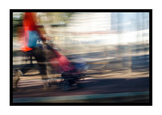 In the March 2014 edition of the Physical Therapy Journal, Shirley Sahrmann wrote a perspective paper regarding our role as movement specialists. Her paper was written in response to the 2013 APTA House of Delegates new vision statement, "transforming society by optimizing movement to improve the human experience." A key guiding principle of that vision statement is that "the physical therapy profession will define and promote the movement systems as the foundation for optimizing movement." Sahrmann states several purposes of the paper, two of which I am going to elaborate on in this post: 1. Advocate for promoting both kinesiopathology and pathokinesiology as important movement system concepts 2. The movement system must be embraced by physical therapists who seek to achieve the full potential of their critically important role in society. 1. Advocate for promoting both kinesiopathology and pathokinesiology as important movement system concepts Without question, movement is at the heart of the physical therapy profession. In a sense, it is our identity. This message has been proclaimed for decades, most notably by Florence Kendall who throughout her career discussed "the importance of the profession establishing a relationship with a system of the body." However, if movement is truly what we do, we need to start promoting a model that reflects our practice. These models are both pathokinesiology and kinesiopathology. Pathokinesiology: study of abnormal movement resulting in pathology. Kinesiopathology: imprecise movement or a lack of movement resulting in pathology. By promoting pathokinesiology and kinesiopathology, we are intentionally moving away from the standard pathoanatomical model. Rotator cuff tear, disc herniation, trochanteric bursitis, etc. will not be the focus of our treatments as they do not incorporate the underlying movement dysfunction. For example, a person with a referring dignosis of disc herniation might actually have a disc herniation, but that is not what we are treating. Our job is to treat the movement pattern that is causing that person's symptoms. The cause of their disc herniation could be due to poor proximal strength, adverse neural tension, poor lumbopelvic disasociation, or others. Documenting in your assessment that the patient has a disc herniation provides no explanation for the type of physical therapy treatment you intend to perform. This is a difficult concept to fully grasp as much of PT school and the APTA are still focused on the anatomy of the pathology. If you look at the Orthopaedic Section's monographs, most of the content is broken down by pathology: osteoarthritis, tendinopathy, impingement, etc. If we are going to identify ourselves as movement specialists, we need to begin moving away from pathoanatomical terms and starting speaking the language of pathokinesiology. We are not treating the anatomy, we are treating the underlying movement dysfunction. 2. The movement system must be embraced by physical therapists who seek to achieve the full potential of their critically important role in society. If we are not treating the anatomy and we are focusing on the movement dysfunction, we need to start identifying ourselves with a specific movement system. The system needs to be universal and recognized by all individuals that practice it. Current systems I have been exposed to are the Sahrmann movement impairment systems and the Selective Functional Movement Assessment (SFMA). Both of these systems focus on identifying the cause of the cause of a patient's symptoms.. For example a patient with a rotator cuff tear may present as a Sahrmann shoulder downward rotation syndrome. Using the SFMA, they could be classified as dysfunctional painful (DP) in the shoulder patterns. Both systems would likely find the primary impairments as weak lower traps, weak serratus anterior, strong downward rotators, and poor thoracic mobility depending on how the patient presents. The impairments were found by analyzing movement and help guide the therapist in his or her diagnostic process. Adopting a movement system will standardize our treatment programs, improve outcomes, and help us reach autonomy. As Sahrmann states in her perspective paper, "if we are able to successfully define the components of the movement system such that they can be reliably tested and validly treated, we will be illuminating that area of human function and be recognized for that expertise." I want to conclude with another Sahrmann quote: ""Labeling a condition is most often the first step in treatment. Referral sources should expect a label from us. Yet, currently, "Physicians refer to consultants for diagnosis. They refer to PTs for treatment. Autonomy will be actualized when physicians refer to PTs to obtain diagnoses."" At the student physical therapist, we know we do not have all the answers, but at the very least we want to bring the question to the table. Are you practicing and documenting in a model of pathoanatomy or pathokinesiology? What movement system do you follow? Do you think physical therapists should adopt a specific movement pattern? Article: The Human Movement System: Our Professional Identity -Jim References: Sahrmann, Shirley. "The Human Movement System: Our Professional Identity."Physical Therapy (2014): 3.1-29. Web. 15 June 2014.
4 Comments
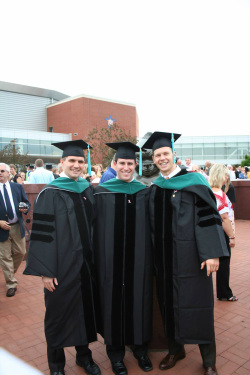 Some of you may remember reading this post on Doctors of Physical Therapy Website about a year ago, but we believe its message is consistent. One of the biggest barriers to changing our profession is a lack of patient education and understanding of who we are and what we do. This post presents a simple, consistent message: " I am (a) ___________." -Musculoskeletal Expert, Movement Analysis Specialist, Direct Access, Cost Effective, etc. We must advocate for our profession from the Patient-Upward and not strictly Top-Down. We cannot expect to persuade the AMA or Insurance Companies to give us rights if we have little support from our consumer. Spread the Word!!!  Our roles as physical therapists is constantly changing & seems to differ extraordinarily depending on what type of patient population you see. Currently, I see A LOT of chronic pain. If someone presents with chronic pain, usually this means the traditional medical model of care will not suffice. In these situations, it is important to use the biopsychosocial model of care if I plan to be successful. Part of the biopsychosocial model is understanding what barriers a person has to therapy. By addressing these barriers, the therapist will best be able to address impairments in the scope of the patient's life. Also by looking at these barriers, you will be able to see if a patient is ready for physical therapy. "Ready" you may be asking yourself? One reality I quickly stumbled across while practicing at a community hospital is that certain people have so many life stresses that take priority before their musculoskeletal health. If a patient comes to see you with cLBP, but also has a history of depression, transportation issues, financial problems, family problems, and reports little to no exercise, strengthening the PGM may not be the first thing they need. I would recommend starting this patient on a general exercise program and a few basic exercises. Going back to barriers, one of the biggest barriers I face each day is patient adherence and compliance. I often struggle with how to address these issues. Which clients are appropriate for PT and which are unfortunately not ready to change? Check out this post by Chris Johnson. He poses some great questions that will put you and the patient on the same level regarding your goals and their expectations of physical therapy. They may save you some time down the road. -Jim Labeling a condition is most often the first step in treatment. Referral sources should expect a label from us. Yet, currently, "Physicians refer to consultants for diagnosis. They refer to PTs for treatment. Autonomy will be actualized when physicians refer to PTs to obtain diagnoses."
|
Dr. Brian Schwabe's NEW Book in partner with PaleoHacks!
Learn residency-level content on our
Insider Access pages We value quality PT education & CEU's. Click the MedBridge logo below for TSPT savings!Archives
July 2019
Categories
All
|



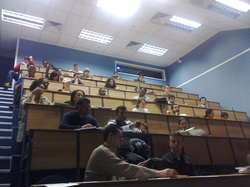
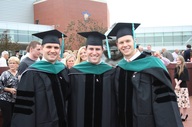
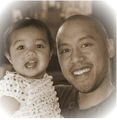
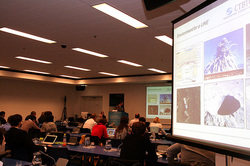
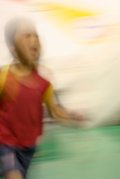




 RSS Feed
RSS Feed